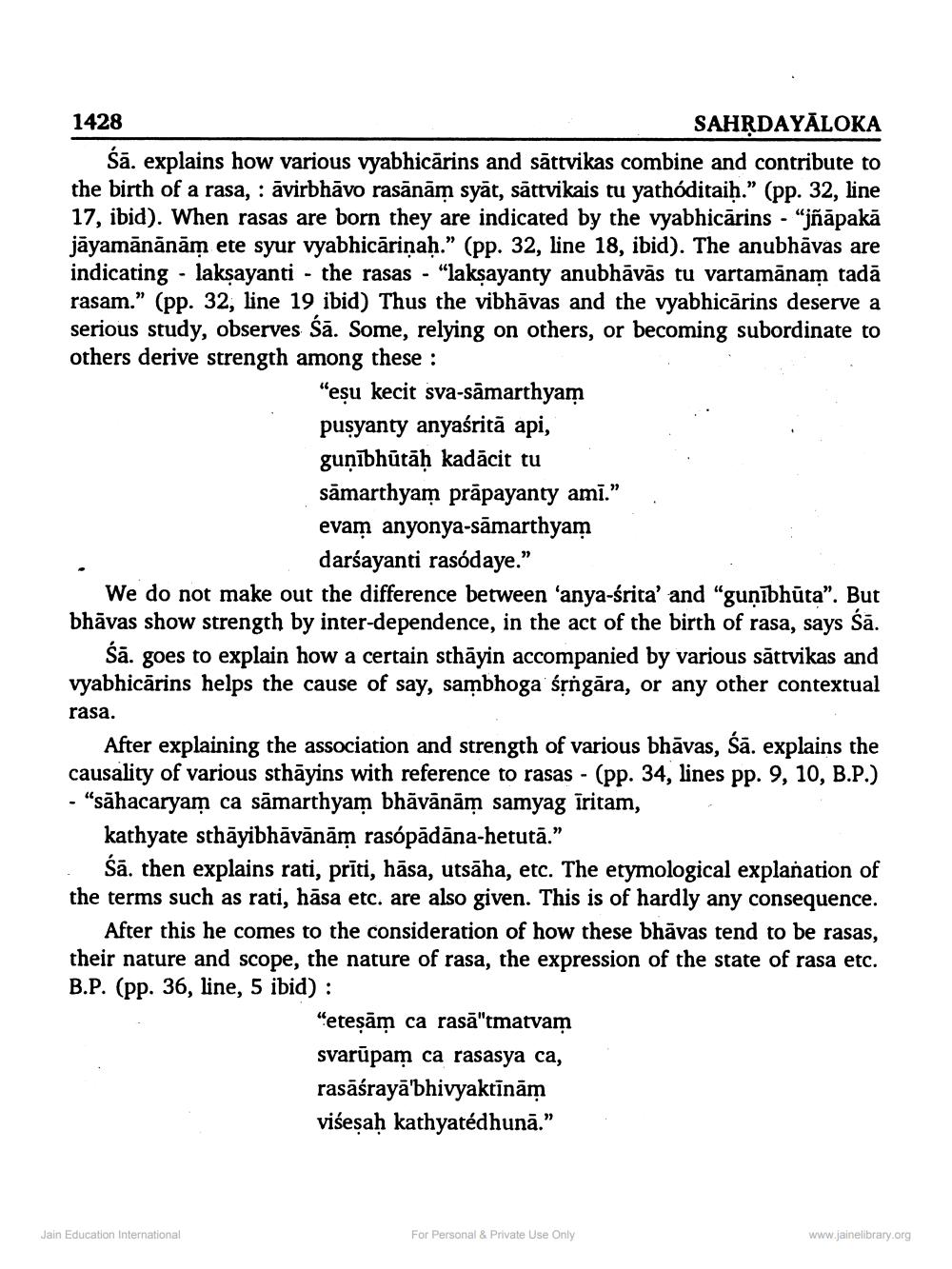________________
1428
SAHRDAYĀLOKA Sā. explains how various vyabhicārins and sāttvikas combine and contribute to
th of a rasa, :āvirbhāvo rasānām syāt, sättvikais tu yathóditaih.” (pp. 32, line 17, ibid). When rasas are born they are indicated by the vyabhicārins - "jñāpakā jāyamānānām ete syur vyabhicāriņa).” (pp. 32, line 18, ibid). The anubhāvas are indicating - lakṣayanti - the rasas - "lakṣayanty anubhāvās tu vartamānam tadā rasam.” (pp. 32, line 19 ibid) Thus the vibhāvas and the vyabhicārins deserve a serious study, observes Sā. Some, relying on others, or becoming subordinate to others derive strength among these :
"eșu kecit sva-samarthyam pusyanty anyaśritā api, gunībhūtāḥ kadācit tu sāmarthyam prāpayanty amī.” evam anyonya-sāmarthyam
darśayanti rasódaye." We do not make out the difference between 'anya-śrita' and "gunībhūta". But bhāvas show strength by inter-dependence, in the act of the birth of rasa, says Sä.
Śā. goes to explain how a certain sthāyin accompanied by various sāttvikas and vyabhicārins helps the cause of say, sambhoga śrngāra, or any other contextual rasa.
After explaining the association and strength of various bhāvas, sā. explains the causality of various sthāyins with reference to rasas - (pp. 34, lines pp. 9, 10, B.P.) - "sāhacaryam ca sāmarthyam bhāvānām samyag īritam,
kathyate sthāyibhāvānām rasópādāna-hetutā.”
Śā. then explains rati, prīti, hāsa, utsāha, etc. The etymological explanation of the terms such as rati, hāsa etc. are also given. This is of hardly any consequence.
After this he comes to the consideration of how these bhāvas tend to be rasas, their nature and scope, the nature of rasa, the expression of the state of rasa etc. B.P. (pp. 36, line, 5 ibid):
"eteșām ca rasā"tmatvam svarūpam ca rasasya ca, rasāśrayā'bhivyaktīnām visesah kathyatédhunā."
Jain Education International
For Personal & Private Use Only
www.jainelibrary.org




